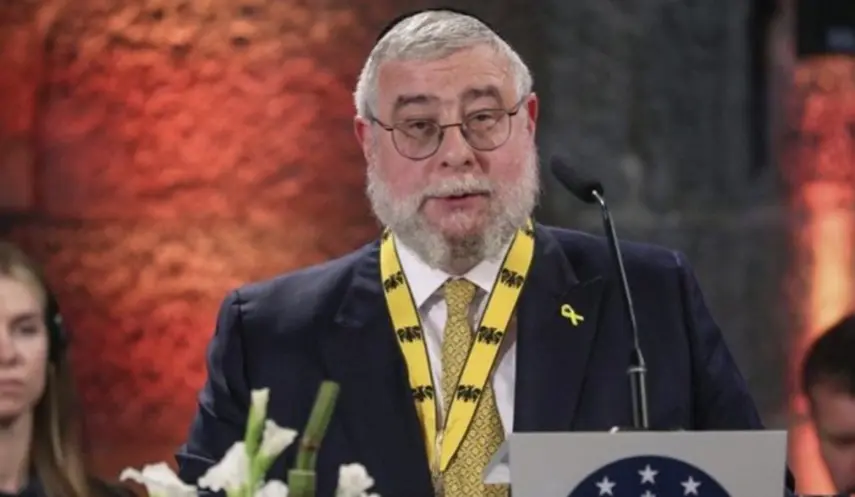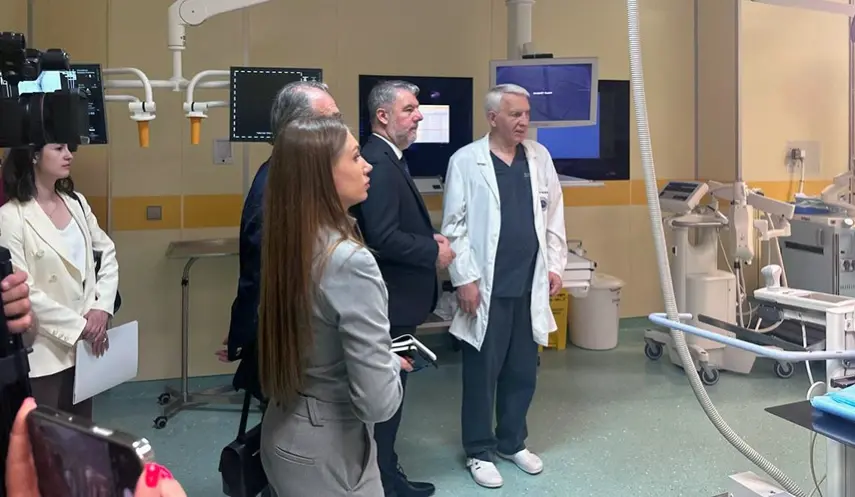LOZO: BREAKTHROUGH OF JASENOVAC HELL – SINGLE OPTION THAT MEANT SURVIVAL, AT LEAST FOR A FEW MARTYRS
Region - Serbs - crime /2/
04/23/2025
10:00

BANJA LUKA, APRIL 23 /SRNA/ - In the time when Republika Srpska, due to global changes, again endures big pressures, it is our duty and obligation, more than ever, to build a responsible culture and politics of remembrance, said historian Predrag Lozo.
"If we go back to the subject of camps, it should be reminded of the fact that two large systems, Gospić-Jadovno-Pag and Jasenovac, functioned chronologically one after the other throughout the existence of the Independent State of Croatia /NDH/.
In some way, they are its essence and the axis of its /non/sense. In the first place, it was the destruction of the Serbs and then, in accordance with the new Nazi order and with little initiative from outside, the destruction of the Jews and the Roma," Lozo pointed out in his text.
He stated that the characteristics of the evil of the NDH and Jasenovac can certainly include the well-known document which says that this system has unlimited capacity for the reception of prisoners, and that meant only one thing - a mass and severe death.
"This camp system, characterized by its cruelty, was placed in the area of 210 square kilometers and it included camps /which in historiography are marked with ordinal numbers from I to IV/, execution sites, among which Donja Gradina is the biggest, and also other camp localities and facilities.
Camps I and II, i.e. Krapje and Bročice /Šuma/, were liquidated in November 1941 because of the floods and after that, in the area of company Bačić and Friend, a kilometer and a half downstream from the center of Jasenovac, Jasenovac camp number III, called Ciglana, was formed. Camp number IV was the Tanner facility in the town of Jasenovac itself, while a separate unit was the Stara Gradiška camp, or camp number V," Lozo explained.
Everything that was happening in Jasenovac camps and execution sites, he stated, is hard, even impossible to describe.
"It seems that today's members of our people understand and remember this, rationally and irrationally, physically and metaphysically. It is already part of what is called the collective conscious, but also the collective unconscious.
Our ancestors, in this symbol of evil, clothed themselves in the robe of martyrs and witnesses, which we still wear today, and which can be most adequately understood through the liturgical memory of our church and through the Kosovo covenantal vertical. Historical science is only one of the tools of that attempt," Lozo stated.
According to him, the most terrifying episodes of Jasenovac "exploded" after the martyrdom epic of Kozara and Potkozarje, which, in the summer of 1942, after the Ustasha-German offensive, flooded the Jasenovac trails and bogs with prisoners.
"Waves of crime and senselessness flooded this system almost until the end of the war in 1945. We will not enter into debates that have been going on for a long time, or are still going on in historiography today, such as `why Jasenovac was not liberated` or statistical reviews of the exact number of victims which, unfortunately, we do not know even today, and which we will never know. This does not mean that we should not constantly work on the list of victims. On the contrary!" said Lozo.
Speaking about the meaning of understanding and commemorating April 22 in Serbian history, Lozo explained that, according to the testimonies of surviving camp inmates, on April 21, 1945, the Ustashas, aware of the approaching end, took the remaining group of women camp inmates to Donja Gradina and killed them. There were several hundred of them and they were singing while they were forcibly leaving in a column!
"In the male camp, the scene was almost unreal - there was silence! Realizing what was going on, the surviving inmates of the `Ciglana` camp, the bravest ones, prepared a plan overnight - a breakthrough, because death was destined for all of them. Milutin Marić, a Jasenovac inmate and a breakthrough participant, witnessed that he was in charge of sending a signal to Ante Bakotić and the other participants at exactly 9:50 a.m. and then they should begin the breakthrough.
Ilija Ivanović, a child inmate from Gornji Podgradci, later wrote in his book `Witness to Jasenovac Hell`: I am running towards the exit where the inmates are fighting to open the gate. On the right side, at the road inside the camp, inmate Mile Ristić shoots from the machine gun. Next to him is the body of a dead Ustasha. Now Ustashas also have to be careful. While I'm running, I keep repeating `He will not shoot me, he will not shoot me, he will not…` I console myself. I hope. I'm going through the gate. There are a lot of dead and wounded. I jump over them, but also walk over dead bodies. I’m on the road. To the right is the Sava River - deep and cold. It is full of inmates. One head next to another," Lozo reported the testimony of the then child inmate Ilija Ivanović.
Ilija wrote in the book that the Ustashas, in front of the coming group of inmates, fled to the right and left. One of the braver ones stayed in the direction of the prisoners' attack, intending to stop us. The group ran straight at him. He killed one, then another, he couldn't do it anymore, he got his deserved punishment. The camp inmates simply ran him over.
"I had a feeling as if they didn't stop at all. He paid his bravery dearly. Exhausted, hungry, and until this morning powerless prisoners turned into lions tearing with their bare hands...," Ilija said.
Just as the Serbian people in the early summer of 1941, first in Herzegovina and then in other parts of the NDH, says Lozo, were forced to rise up to save what could be saved, so historical events, or fate, determined that the end of the Jasenovac hell would come about through a breakthrough - self-liberation and with the knowledge that many would suffer.
However, he emphasized, it was the only option that meant survival, at least for someone.
"Out of just over 1,000 inmates from `Ciglana,` around 90 survived the breakout, and from `Kozara` only 12 out of a total of 87. In other parts of the camp, another 55 inmates were saved in various ways. In total, according to previous research, 167 of them. A breakout, with virtually no chance, was the only option for survival," Lozo said.
And just as Ilija Ivanović, the night before, in his dream, but also on the day of the breakthrough, looked for a way to safety to his Podgradci people, looking back only for orientation towards Jasenovac, Lozo added, it seems that in the 1990s, Serbs in the former socialist republics of BiH and Croatia understood Ćopić's principle that when there is no state, a Serb suffers.
"Looking back towards Jasenovac, Jadovno, Prebilovci, Stari Brod, Korita, they formed their own bulwark that offered them a fight for defense and that offered them a chance that Jasenovac would not happen again. And it did not happen again, no matter what. It did not happen again, even though the Serb Republic of Krajina, except in our memories, no longer exists. In Croatia and the Federation of BiH, Serbs have been euphemistically `reduced` to about three percent. Republika Srpska defended itself.
For all of this, and bearing in mind the fact that Donja Gradina is located on the territory of the Republika Srpska, as well as the fact that the New Serbian Martyrs are commemorated in the Jasenovac Monastery every September 13th, every April 22nd, in addition to being our Day of Remembrance for the victims of the genocide against Serbs, but also for the heroes of the uprising and struggle, reminds us that we have not yet paid the debt of worthy commemoration of this place. The place that Bishop Atanasije /Jevtić/ called a sanctuary perhaps greater than Kosovo!" historian Predrag Lozo concluded.

GOLDSCHMIDT: STILL WAITING FOR APOLOGY FROM BiH AUTHORITIES

POSSIBLE COOPERATION BETWEEN ALMAZOV RESEARCH CENTRE AND UNIVERSITY CLINICAL CENTRE

SARAJEVO "TROIKA" WANTS TO WEAKEN SNSD - THE BIGGEST OBSTACLE TO UNITARY BiH



